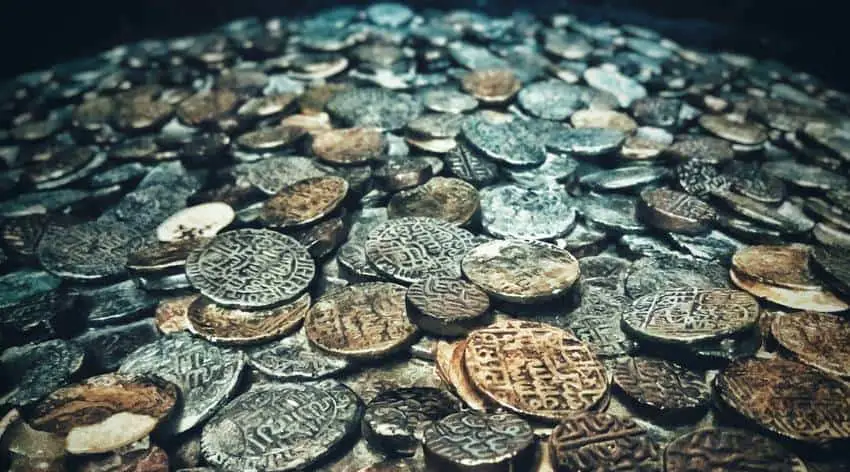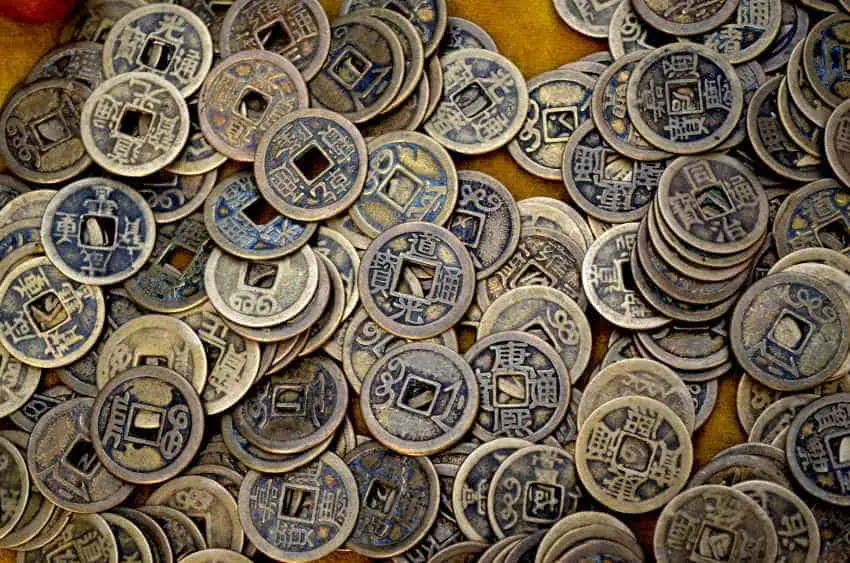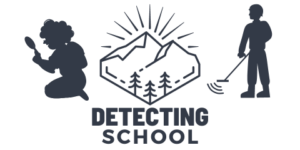
Though U.S. coins are the most popular ones within collectors today, collecting ancient coins has a long tradition.
Indeed, ancient coins are a great option for those looking to expand their collection or even for those starting out who are interested in the history and allure of ancient coins.
If you’re thinking of joining the ranks of Thomas Jefferson or Augustus Caesar and starting your own ancient collection, this article will help get you started!
Where can you find ancient coins in general?
Ancient coins can be found in many of the same places as modern collector’s coins: coin dealers, shops, auctions, and shows. These include physical locations as well as online coin stores and auction sites.
You may see uncleaned or cleaned lots of ancient coins for sale. You likely won’t find any rare or valuable coins in these lots, nor any precious metals, but perhaps a good mix of common ancient Greek or Roman coins. It can still be fun to rifle through them and gain practice in identifying ancient coins.
It is often recommended for beginners to avoid buying ancient coins on eBay. If you do decide to go this route, make sure to do your due diligence in thoroughly researching the coin and the seller.
They should have a large history of positive sales and plenty of information on the coin. Avoid buying rare and valuable coins on eBay—it’s just not worth the risk.
For valuable and rare ancient coins, be sure to buy certified coins from a reputable dealer or auction house. They will not risk their reputation on selling a fake, and your hard-earned money will be in safer hands!
How can you recognize ancient coins and determine their value?
Identifying ancient coins is part of the challenge and the fun. You’ll need to piece together several clues about a coin to determine its type:
- Shape
- Diameter
- Thickness
- Weight
- Metal
- Legend (words inscribed on the coin)
- Mint mark and symbols
- Denomination
- Any beading around the coin’s surface
- People, symbols, and imagery on the coin’s two surfaces
- Language used
Often you will need to translate inscriptions or look up abbreviations. Get out your decoder ring! In all seriousness, a good reference book (Check These Coin Books) for the period of ancient coins you are collecting will go a long way. Studying and practice will help you get familiar with symbols and distinguishing features of coins in a particular era.
Making it more difficult, some coins may be so worn or dirty that it is hard to distinguish certain features easily.
Don’t give up. If you’re really having trouble, you can post pictures online to a coin forum, and some other nice hobbyists may help you out. You can also take your coin to a dealer for help.
Just like modern day coins, rarity, condition, metal content, and demand are going to affect coin value. We’ll get into this a little more in the next section.
You learn more about the best practices to collect valuable coins!
How should you clean and store ancient coins?
Cleaning ancient coins for the average collector is a subject of debate. Some say coin cleaning should really be left to professionals, and I agree that’s your safest bet. If you don’t know what you’re doing, you can certainly ruin a valuable coin.
Ancient coins are going to show their age, and the natural toning is part of the appeal. Just think of all the people and history that have passed these bits of metal over the centuries.
On the other hand, ancient coins can have so much dirt, filth, and grime on them that they can be practically indistinguishable and more difficult to appreciate. They also aren’t held to the same strict standards of quality as modern day coins, though you certainly don’t want to damage your coin.
If you’re going to attempt cleaning yourself, please research proper methods in more detail and understand the risks before you get started.
Coin storage methods for ancient coins can be similar to other coins. Again, because these coins are less likely to be in mint condition, some will argue super-protective storage options like capsules just don’t make sense except in rare cases.
Because some ancient coins have withstood the test of time and undergone much handling and exposure to the elements, some choose to not be as protective with their ancient coin storage methods.
As far as I am concerned, I prefer to use Coin Albums (Check it Here at Amazon) to store such coins!
How much are ancient coins worth?
The same price principles of coin collecting generally apply to ancient coins. Where there are fewer of a certain coin in existence or publicly available, the value will be higher (assuming there is demand).
However, rarity of ancient coins can change if new lots of the ancient treasures are found!
Ancient coins made of gold or silver will at a minimum fetch the going bullion price.
Finally, there is condition as a factor. Grading is not as strict or technical with ancient coins—it’s more subjective. Many dealers will use a descriptive grade for ancient coins, such as poor, good, very good, fine, very fine, extremely fine, and mint.
Your best bet will be to do use a recent guide and do some comparative research to see what your ancient coin may be worth. Despite being centuries old, some coins may be worth only a few dollars, whereas others could be worth thousands.
Getting started with an ancient coin collection

Ancient coins are one of the only ways the average person can own a piece of ancient history and ancient art. Let’s review some popular types of ancient coin collections that may pique your interest.
1. Greek coins
Greek coinage started a few hundred years before Roman coinage, though they have significant periods of overlap and share some historical figures. Greek coins are often described as some of the most beautiful, with stunning examples of artistry on them.
Ancient Greek coinage is generally divided into three periods: archaic, classical, and Hellenistic. Earlier coins will appear more rudimentary. Because of their shorter time period, some Greek coins are extremely rare.
Ancient Greek coins often do not have dates or mint marks. They may have Greek symbols on them.
It can be helpful to start with a book about Ancient Greek coins. There is no set pattern to starting a Greek coin collection so you should choose whichever Greek coins interest you the most. You might choose a period of time, a specific metal, or an area of Greece to focus on.
2. Roman coins
Roman coins are the most popular and probably the easiest to start an ancient coin collection. There is plenty of documentation out there to learn from, which will help you in identifying these coins.
Roman coins often have Latin letters on them and busts of Roman emperors. They are divided into three periods: the Republic, the Imperators, and the Empire. Coins with Roman emperors that had short rules may be quite rare.
Again, because of the great variety in existence as well as the rarity of some of the coins, collecting ancient coins will not be about amassing a complete set. Getting one of every denomination or type would be quite difficult for the average collector. Instead, you’ll be able to choose the coins that are interesting and meaningful to you.
3. Chinese coins
Chinese coins have a long history, and the stories and symbolism behind the coins can make them interesting to collect. There are thousands of varieties available from across over 2,000 years of history.
Many ancient Chinese coins can be identified by their common square hole in the center and Chinese characters. Chinese coins were not usually made of precious metals.
Unfortunately, there are many fakes in existence so it is best to start in the lower price ranges until you are more educated in spotting fakes. Online forums and other collectors can be good ways to learn about ancient Chinese coins and reputable dealers.
How were coins made in ancient times?
Some ancient coins (often bronze) were cast using molds made of ceramic or stone. However, most ancient coins were hand struck. Some of the tools from ancient mints have been discovered, giving clues to the processes used.
Blanks could be created in several different ways: cast in molds, hammered out in sheets and cut, or chiseled from bars. Dies used to create struck coins were hand-carved or engraved. Few exist today, because the common practice was to destroy or melt them when no longer usable.
Soft metals may have been struck cold, while harder metals required heating before being struck. The obverse (heads) side of the coin would have been fixed in an anvil or log while the reverse (tails) side was affixed to the end of an iron shaft.
The metal worker would strike the iron shaft with his hammer, imprinting both sides of the coin at the same time. It would often take multiple strikes to complete the coin, and the die could shift between strikes, creating small variations.
How old is the oldest coin?
Lydians were the first civilization known to use coins. They pre-date ancient Greeks and lived in the area of what is today Turkey.
Lydian striated coins, with a pattern said to resemble the surface of water, are extremely rare with only 12 known to be in existence. The coins were made of electrum and struck over 2,650 years ago.
Final Thoughts: Getting Started With Ancient Coins
As you can see, ancient coins can be quite an adventure for the collector. There are numerous options for selecting a niche that intrigues you the most and fits with your collecting budget.
Ancient coins can be more forgiving in their handling and storage but more challenging in terms of identifying coins and making sure you’re getting a fair deal. They are hand crafted and full of history.
You will likely not regret exploring this interesting side of this hobby!
Finally, I highly encourage you to check my best numismatic tips! You will learn a lot!
